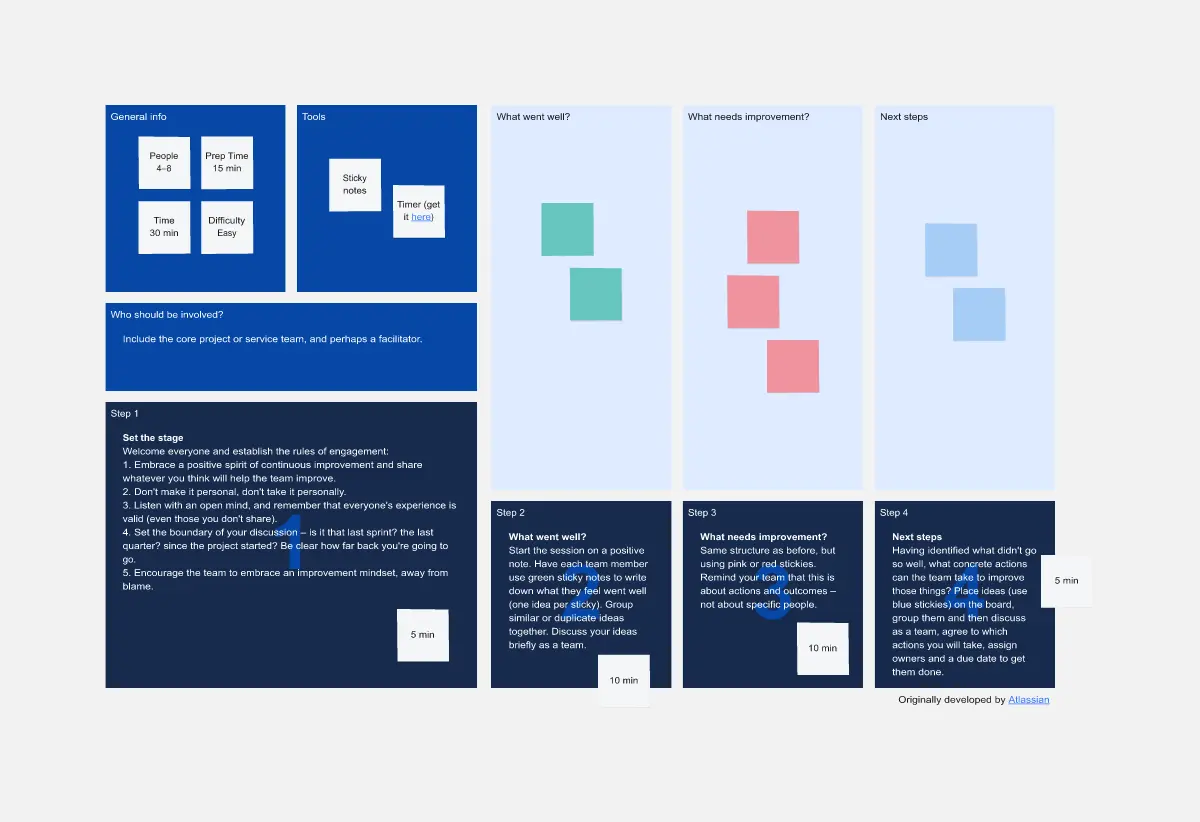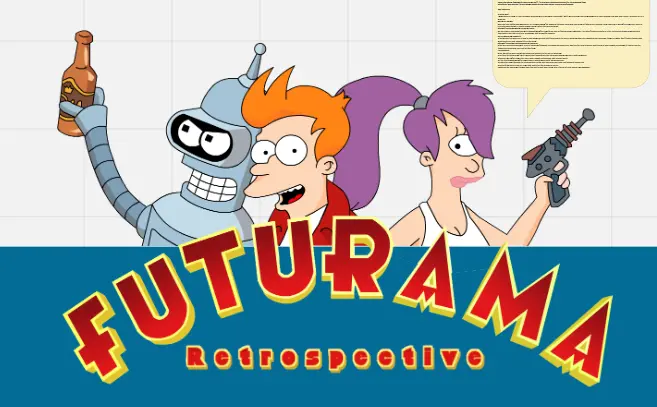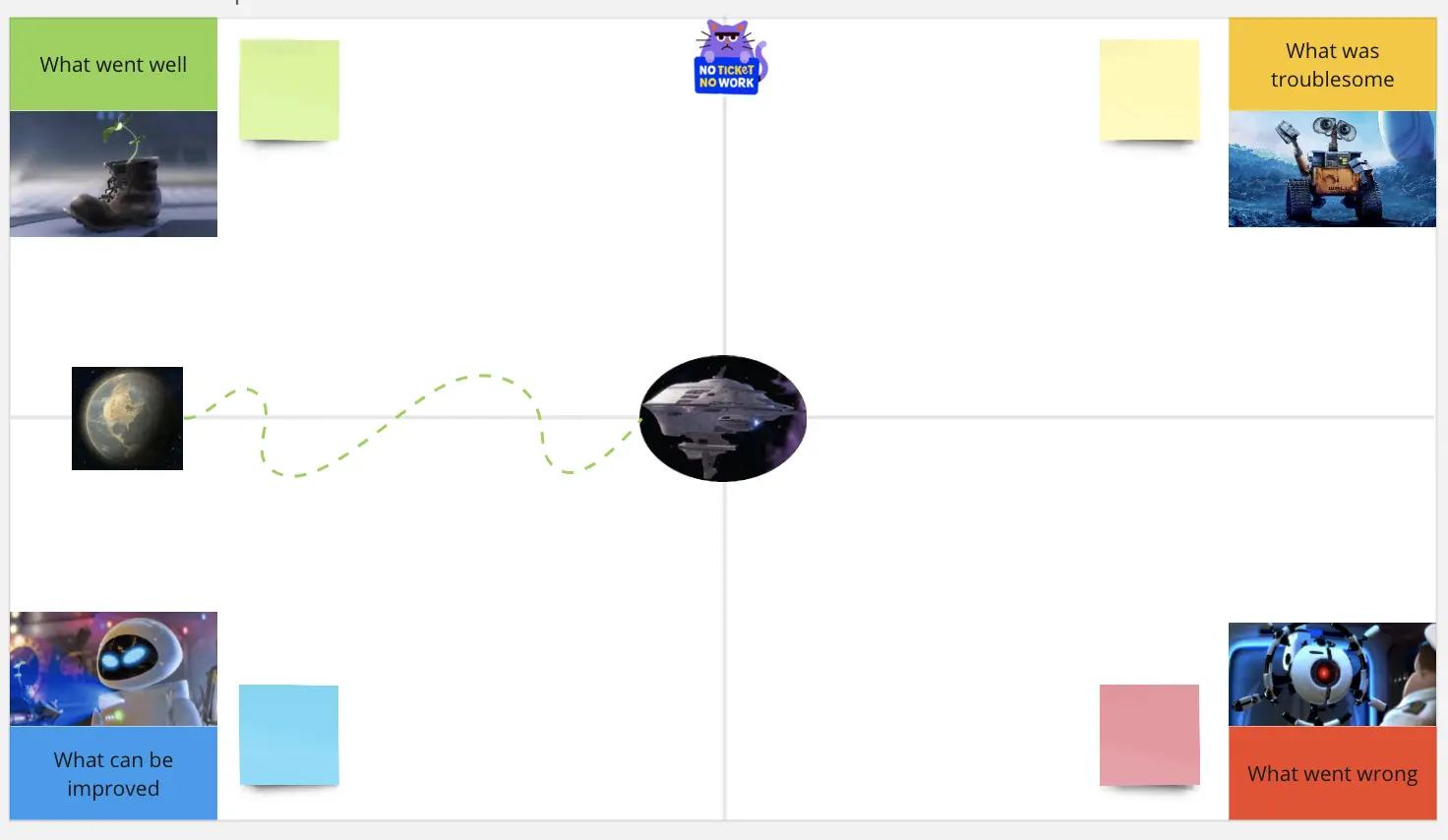Welcome to the Hogwarts Spellbook Retrospective, an innovative template designed specifically for product managers, engineers, and project managers. This board enables teams to reflect on their past iterations, unlock new knowledge and skills, address problems, and foster a culture of continuous improvement.
How to Use this template
Follow the steps below to get the most of this retro for you and your team.
1: Icebreaker - Unleash your magical powers
Start your retrospective session with an icebreaker activity to engage the team and set a positive tone. Begin by leaving a comment or sticky note on the board, sharing the spell or magical power you wish you had during the last sprint.
2. Reflect on knowledge and skills unlocked
Review the question in the first sticky note: "What knowledge or skills did we unlock during our last iteration?" Encourage team members to share their insights and experiences by adding comments or sticky notes. This reflection allows the team to recognize their achievements and identify areas where they have grown and developed.
3. Disarm Problems and Issues
Address the question in the second card: "What problems or issues can we disarm?" Invite team members to contribute their thoughts on any challenges they faced during the previous iteration. Encourage them to suggest ways to tackle these problems and reduce their impact. This exercise promotes problem-solving and collaboration within the team.
4. Add levity and lightness to work
Explore the question in the third card: "Are there any ways we can lighten the load and add some levity to our work?" Encourage team members to brainstorm ideas for making work more enjoyable and less burdensome. This could involve introducing small changes or activities that promote a positive and uplifting atmosphere.
5. Illuminate the way forward
Consider the question in the fourth card: "What illuminates the way for our work and guides us?" Encourage team members to share their thoughts on how to increase transparency, communication, and alignment within the team. This exercise helps identify areas where improvements can be made to enhance teamwork and progress.
6. Eliminate blockers and set targets
Discuss the question in the fifth card: "What issues or blockers did we kill off during our last iteration?" Encourage team members to celebrate their successes in overcoming obstacles and share any remaining challenges. Additionally, ask the team to set targets for the upcoming sprint, focusing on what they want to achieve and the blockers they aim to eliminate.
7. Protect against failure and celebrate successes
Reflect on the question in the sixth sticky note: "How can we better protect ourselves from failure and issues in our work? Also, what are some of our happiest memories from the sprint?" Encourage team members to share strategies for mitigating risks and ensuring success. Additionally, celebrate the team's accomplishments and highlight memorable moments from the previous iteration.
8. Rate the return on time invested (R.O.T.I.)
Finally, conclude the retrospective by rating the return on time invested using the provided ratings in the eighth card. Team members can leave comments or stickies based on the Golden Galleon (useful productive discussion), Silver Sickle (a fair time investment), or Bronze Knut (poor return on investment). This feedback helps gauge the effectiveness of the retrospective session and provides valuable insights for future improvements.

Dave Westgarth
Digital Delivery Manager @ BJSS
Dave Westgarth is currently working as Head of Delivery @ UnifEye. He serves on software development, automation, cloud and AI/ ML projects across the spectrum of delivery approaches.
Categories
Similar templates
Retrospective

Retrospective
The Atlassian Retrospective template offers a structured framework for teams to reflect on past iterations and improve their processes. It provides elements for identifying what went well, what could be improved, and action items for the future. This template enables teams to conduct retrospectives effectively within the Atlassian ecosystem, fostering collaboration and continuous improvement. By promoting reflection and accountability, the Atlassian Retrospective empowers teams to optimize their workflows and enhance productivity effectively.
Futurama Agile Retrospective Board
Wall-e Retrospective
Retrospective

Retrospective
The Atlassian Retrospective template offers a structured framework for teams to reflect on past iterations and improve their processes. It provides elements for identifying what went well, what could be improved, and action items for the future. This template enables teams to conduct retrospectives effectively within the Atlassian ecosystem, fostering collaboration and continuous improvement. By promoting reflection and accountability, the Atlassian Retrospective empowers teams to optimize their workflows and enhance productivity effectively.

